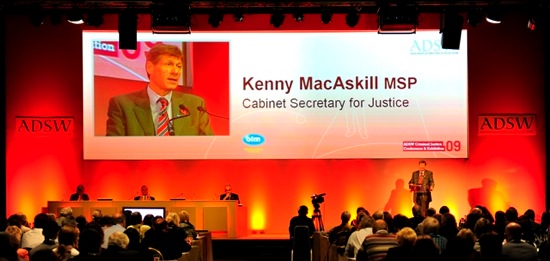This is a guest post by Jo Moor. She has 15 years experience in the events industry and currently works at Vision Events (UK) who are an event production company producing top end corporate and bespoke events for prominent and influential clients throughout the UK and Europe. Submit your guest post here.
Getting your Key Messages Across
One of the biggest challenges for any conference organiser is to ensure you meet your return on investment (ROI). There are many varied activities and event musts, which will assist this result, however, one major factor is to nail down how best to display those key messages.

Although you may not have control over the actual content in the presentation (if you have external keynote speakers or senior management-level speakers creating their own), you can certainly make sure the surface on which the content is displayed is creative and engaging, which will ultimately enhance your delegates’ experience.
There are many options for conference screen set-ups and stage designs: one of which incorporates a wide-screen within the stage design and is the focus of this blog.
Wide-screen Flexibility
Put simply, this is a huge screen – as you may have expected – and is flexible to fit any venue (i.e. ceiling heights/internal architecture restrictions) and suits any conference design as they are often custom made to requirement.
You can install wide-screens in the smallest of venues; even in between venue columns which can add to the overall aesthetics of the set (you can intentionally include the columns as part of the on-screen graphic design).
Conference Content on Wide-screen
Using a wide-screen opens up a world of possibilities to display video, various presentation formats (keynote, PowerPoint etc.), live camera footage and event graphics at the same time, as the screen can be split-up into ‘Picture-in-Picture’ boxes, allowing all the conference media to run together side-by-side.
Your chosen conference graphics team will be able to create this by producing a background slide, complete with subtle animations based on the event branding (colours, logos, graphics etc.), onto which Picture-in-Picture boxes can be programmed to display the content you want in each.
These can be used for live camera close-ups of the keynote speaker at the lectern, wide shots of panel members, PowerPoint/Keynote presentations and video.
As the screen is, literally, wide, the information isn’t crammed onto the surface making it illegible. Rather, it is displayed in a flowing way so the delegates’ eyes have a visual feast of information creating a fantastic impression and an engaging event.
In Conclusion
Wide-screens are the most powerful way for clients to ensure key conference messages are displayed with maximum impact – for audiences of varying sizes, not just large numbers.
For delegates to engage with the presentation content and the keynote speaker via live camera at the same time stimulates their minds and creates a very dynamic conference.
Information is absorbed easily and clients’ find that the best delegate feedback is often from events with these set-ups.
Not only a must for conference production, the wide-screen format is being used more and more for awards ceremonies for maximum finalist/sponsor exposure.





